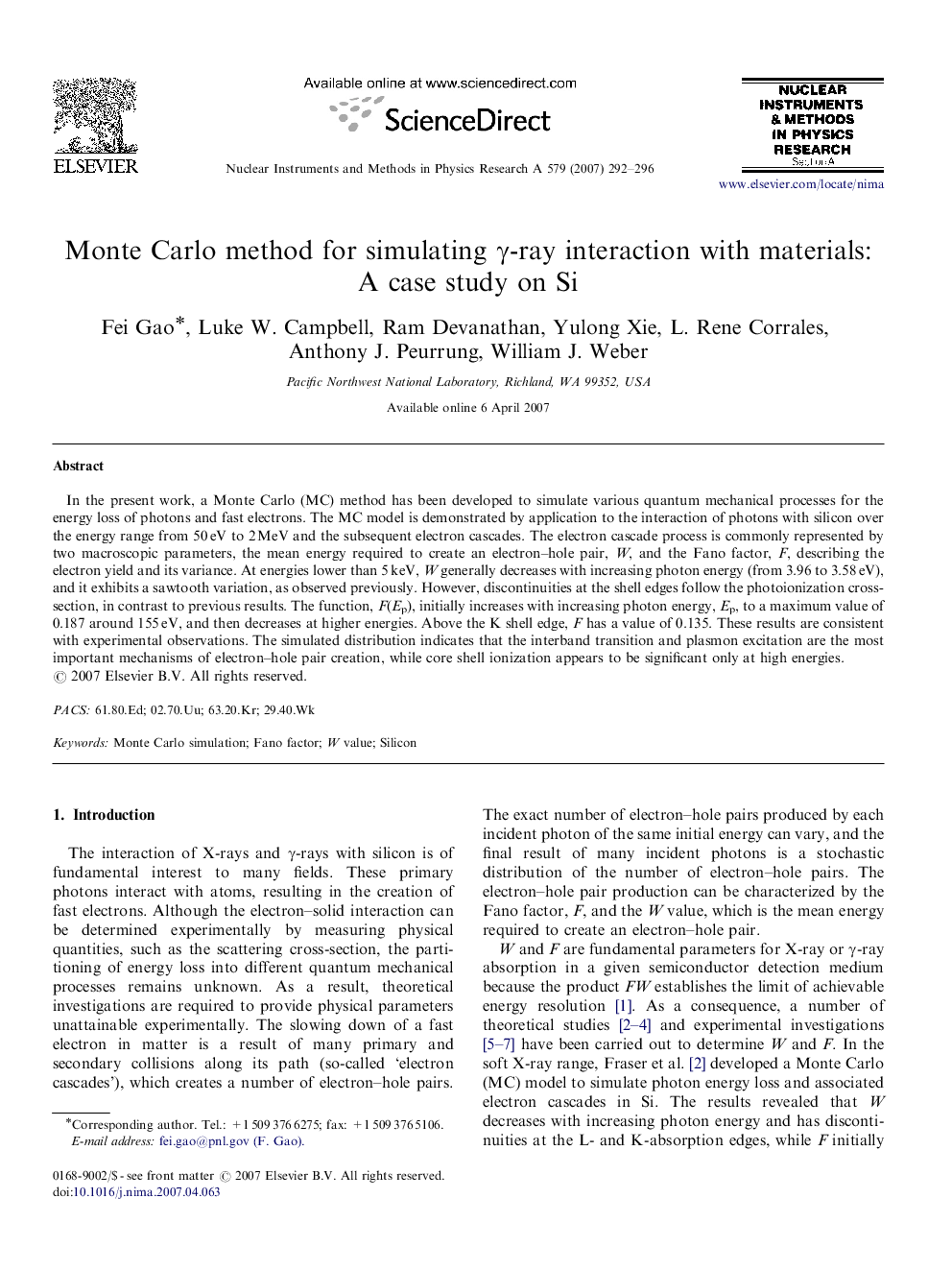| Article ID | Journal | Published Year | Pages | File Type |
|---|---|---|---|---|
| 1830730 | Nuclear Instruments and Methods in Physics Research Section A: Accelerators, Spectrometers, Detectors and Associated Equipment | 2007 | 5 Pages |
Abstract
In the present work, a Monte Carlo (MC) method has been developed to simulate various quantum mechanical processes for the energy loss of photons and fast electrons. The MC model is demonstrated by application to the interaction of photons with silicon over the energy range from 50Â eV to 2Â MeV and the subsequent electron cascades. The electron cascade process is commonly represented by two macroscopic parameters, the mean energy required to create an electron-hole pair, W, and the Fano factor, F, describing the electron yield and its variance. At energies lower than 5Â keV, W generally decreases with increasing photon energy (from 3.96 to 3.58Â eV), and it exhibits a sawtooth variation, as observed previously. However, discontinuities at the shell edges follow the photoionization cross-section, in contrast to previous results. The function, F(Ep), initially increases with increasing photon energy, Ep, to a maximum value of 0.187 around 155Â eV, and then decreases at higher energies. Above the K shell edge, F has a value of 0.135. These results are consistent with experimental observations. The simulated distribution indicates that the interband transition and plasmon excitation are the most important mechanisms of electron-hole pair creation, while core shell ionization appears to be significant only at high energies.
Related Topics
Physical Sciences and Engineering
Physics and Astronomy
Instrumentation
Authors
Fei Gao, Luke W. Campbell, Ram Devanathan, Yulong Xie, L. Rene Corrales, Anthony J. Peurrung, William J. Weber,
